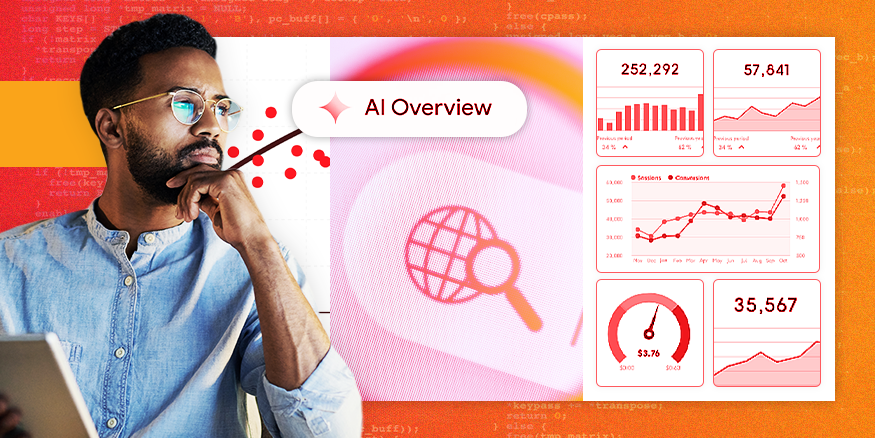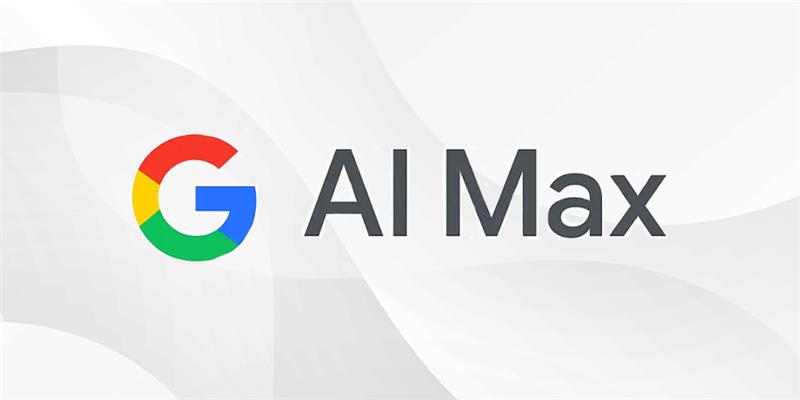

Search advertising is entering a new chapter, one where AI is no longer just a supporting tool, but a driving force in how campaigns are built and optimized. Google’s latest step in this evolution is AI Max, an automated, AI-driven search format with the potential to fundamentally change how brands capture demand. But, as with any new platform, the key question isn’t just what it promises, but how it performs in practice.
At DAC, we’ve had the opportunity to test AI Max with a variety of clients, campaign types, and industries. This hands-on experience has shown us both the opportunities and the limitations of this new approach; insights that are helping us shape a clear point of view on how advertisers should think about AI Max today.
Inside AI Max: a new direction for search advertising
AI Max is Google’s newest experiment in automating paid search. Still in beta, the format is designed to simplify campaign setup and expand reach by using machine learning to handle many of the tasks advertisers typically manage manually. Instead of relying solely on carefully selected keywords, AI Max combines broad match targeting with AI-driven “keywordless” matching to connect ads to queries that may not be part of an existing keyword set.
One of the key promises of AI Max is its ability to build and optimize creative in real time. Though other Google Ads products, like Performance Max, also assemble creative real-time, AI Max uses different inputs. It automatically generates ad copy using existing assets and website content, and selects the landing page it believes is most relevant to the user’s intent. In theory, this allows campaigns to capture incremental demand that traditional search strategies might miss, while ensuring a relevant user experience.
For advertisers, AI Max represents another step in the shift Google’s been taking towards automated ad types. It moves search away from being purely keyword-driven toward a more fluid, AI-led model. The promise is efficiency and scalability, but, as with any automation, it requires close monitoring to ensure that performance aligns with brand goals.
The upside: Where AI Max shines
Early testing shows that AI Max can be a powerful driver of scale and efficiency, particularly for campaigns operating at a national or regional level. By leaning on broad match and AI-driven query matching, it opens the door to audiences that might not be captured through traditional keyword strategies. This often translates into higher impressions, more clicks, and ultimately more leads.
One of the most consistent benefits we’ve observed is cost efficiency. In several cases, campaigns using AI Max have achieved lower CPCs and a reduced cost per lead compared to standard non-brand search. These gains are especially meaningful in competitive categories where incremental improvements can translate into significant budget savings.
AI Max also brings value in its ability to unlock growth in underperforming areas. By surfacing queries and audiences outside of a brand’s existing keyword set, it can generate incremental lead volume that adds meaningful reach to established campaigns. For advertisers seeking new ways to extend performance, AI Max has thus far demonstrated clear upside.
Navigating complexities: Key challenges and considerations
While AI Max has shown promise, our testing also highlights areas where caution is warranted. For example, performance is not uniform across all campaign types. In hyper-local or smaller-budget campaigns, results can be inconsistent, with some locations seeing reduced lead volumes and higher costs per lead. This suggests that AI Max may be better suited to campaigns operating at scale rather than highly targeted, localized efforts.
Traffic quality is another concern. Because AI Max expands well beyond predefined keyword lists, it sometimes matches to queries that are irrelevant or only loosely related to a brand’s objectives. In some cases, relevancy has hovered around 50%, requiring frequent reviews and manual intervention to protect efficiency. Left unchecked, this can lead to wasted spend and weaker engagement.
There are also limitations around customization and targeting accuracy. Advertisers who prioritize strict control over brand messaging often decide against using AI Max’s automated text and URL features, which can constrain the platform’s potential. Even with these settings, we’ve observed issues such as brand/non-brand “bleed” and ads appearing for branded terms in unintended languages, despite having correc language settings enabled.
Finally, advertisers need to be mindful of the trade-off between lead volume and lead quality. While AI Max often improves cost per lead and expands reach, the incremental conversions it generates are not always aligned with deeper-funnel goals. More leads don’t necessarily equate to better business outcomes, a nuance that makes active monitoring essential.
Stay Forward
Get exclusive insights into digital
media's top-trending topics delivered
directly to your inbox.
Where AI Max needs to improve
For AI Max to evolve into a tool that consistently delivers value, greater control and precision will be essential. Advertisers need more flexibility to customize ad copy and landing pages without compromising brand safety or diluting messaging. The current limitations often leave teams choosing between automation and control, when in practice, both should coexist.
Alongside customization, greater precision in query matching is another area that requires attention. Because AI Max can sometimes surface irrelevant or off-target queries, advertisers are forced into constant monitoring to maintain efficiency. By tightening these mechanisms, Google could improve traffic relevancy and reduce wasted spend, helping advertisers spend less time fixing mismatches and more time optimizing for growth.
Beyond controls and improved matching controls, advertisers will also need clearer guidance for this to become a ubiquitous ad type. Today, best practices for when and how to deploy AI Max are still emerging, which can make adoption a costly trial-and-error process. Providing more transparency around campaign types, budgets, and objectives that align best with AI Max would help advertisers use the platform with greater confidence and less risk.
Finding the right balance with AI Max
AI Max is an ambitious step forward for search advertising, and its potential should not be underestimated. Early testing demonstrates that it can drive scale, efficiency, and incremental growth in ways traditional search sometimes cannot. But the same testing also shows that automation alone is not a guarantee of better outcomes.
The reality is that AI Max works best when paired with active human oversight. Advertisers who treat it as a “set and forget” solution risk wasted spend, diluted brand messaging, or traffic that doesn’t align with business goals. Success comes from balancing the platform’s automation with deliberate, hands-on management, ensuring that efficiency gains do not come at the expense of quality.
At DAC, our perspective is grounded in experience: AI Max can be a valuable complement to existing search strategies, but it is not yet a one-size-fits-all solution. By testing responsibly, monitoring performance closely, and protecting brand integrity at every step, advertisers can explore its promise while avoiding its pitfalls. In short, approach AI Max with optimism, but always with control.
Contributing Experts
Stay Forward
Get exclusive insights into digital
media's top-trending topics delivered
directly to your inbox.



